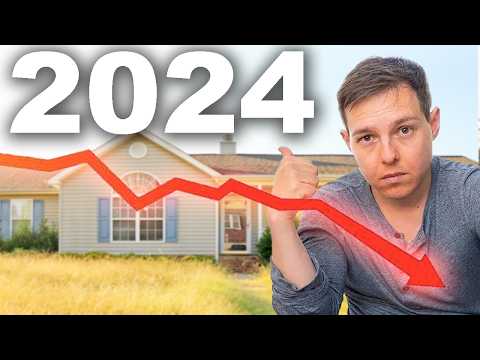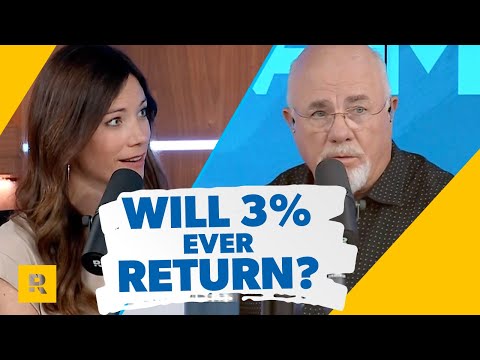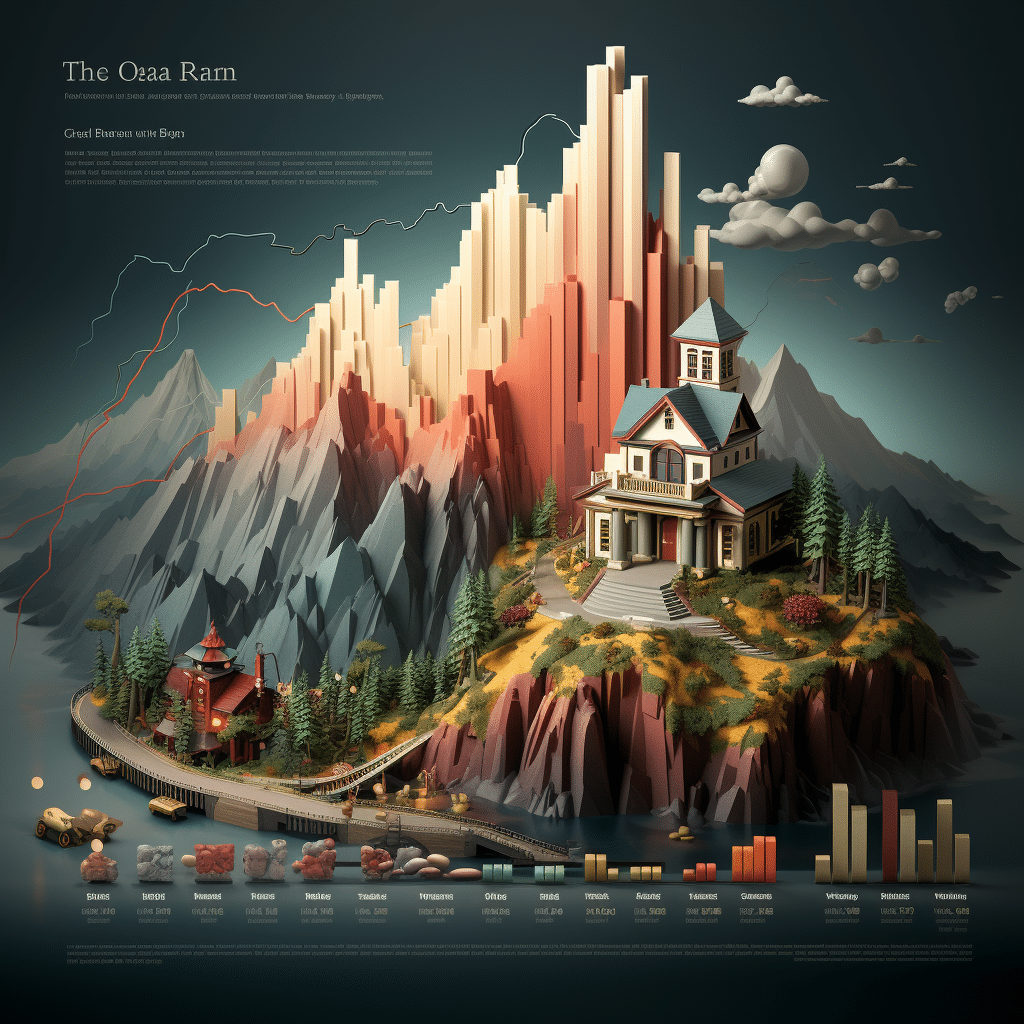As you sit there, coffee in hand, contemplating the American Dream of homeownership, a daunting reality casts a shadow: US home loan rates have reached a peak that many did not anticipate. As of March 5th, the average annual percentage rate (APR) for a 30-year fixed mortgage is 7.37%. This surge from the previous month’s 7.31% and last year’s 5.8% is enough to give prospective buyers pause—and for good reason. It’s a financial landscape that requires navigation with both education and practicality, combining the wisdom of experts like Suze Orman and Robert Kiyosaki.

Understanding the Recent Spike in US Home Loan Rates
The ebbs and flows of US home loan rates are no stranger to the astute observer. Historically, these rates have been influenced by various economic factors and policy decisions. The interplay between supply and demand, inflation, and the Federal Reserve’s monetary policy all play significant roles.
Let’s face it, the current surge to 7.37% didn’t come out of the blue. It’s a result of the Federal Reserve’s battle against inflation—when prices of goods soar, the Fed typically increases interest rates to cool off the economy. This action, although crucial for long-term economic stability, results in higher borrowing costs for consumers, including homebuyers. The increased rates have immediate ramifications: they influence everything from buying power to the monthly mortgage payment you’ll need to cough up.
Considering the inflation rate and various economic indicators, like GDP growth and employment rates, can be harbingers of where mortgage rates might be headed. It’s a delicate balancing act—one that requires the kind of vigilance akin to watching sunset colors change; it’s beautiful but fleeting and ever-changing.

The Immediate Impact on Buyers and the Real Estate Market
So, what does this mean for your wallet? Well, higher rates directly translate to heftier mortgage payments, meaning the home you could’ve afforded at a 5.8% rate might now be out of reach. Buyers are getting a little more than they bargained for, and not in a good way.
And for Pete’s sake, let’s not ignore the impact on different types of home loans. Those with fixed rates might be breathing a sigh of relief, while adjustable rate holders might be sweating bullets, bracing for potentially higher payments in the future.
Real estate agencies and industry experts are all aflutter with reactions. They’re seeing changes in buyer behavior, shifts in market demand, and a cooling effect on home prices in some areas. The market is adjusting, with some homes languishing on the market while others still fetch competitive bids—it depends on where you’re looking.

| Loan Type | Current Average APR* | Previous Month’s APR | Rate at End of 2022 | Key Features | Potential Benefits |
|---|---|---|---|---|---|
| 30-Year Fixed Mortgage | 7.37% | 7.31% | 5.8% | – Fixed payments over the life of the loan – No rate changes |
– Predictability in budgeting – Long-term cost certainty |
| 15-Year Fixed Mortgage | Data not provided | Data not provided | Data not provided | – Shorter loan term – Higher monthly payments |
– Reduced total interest paid – Faster equity build-up |
| 5/1 Adjustable-Rate Mortgage (ARM)** | Data not provided | Data not provided | Data not provided | – Fixed rate for initial 5 years – Rate adjusts annually after that |
– Potentially lower initial rate – Benefits if rates decrease in the future |
| FHA Loan*** | Data not provided | Data not provided | Data not provided | – Low down payment options – More forgiving credit requirements |
– Easier qualification – Assistance for first-time homebuyers |
| VA Loan | Data not provided | Data not provided | Data not provided | – No down payment required – No private mortgage insurance |
– Exclusive to veterans & service members – Potential long-term savings |
Comparing US Home Loan Rates Across Different Lenders
With rates all over the map, it’s crucial to shop around. Big banks like Wells Fargo, Bank of America, and JPMorgan Chase often headline the list of go-to lenders, but their rates can vary significantly. And don’t forget credit unions and online lenders; they can sometimes offer more appealing terms.
Each lender has its quirks and sweet spots, and it pays to be as diligent in this search as one is in tracking down those elusive gold Watches For men—it’s all about value, baby. Importantly, it’s not just about that shiny rate—it’s also about the fees and terms that come with it.

Strategies for Prospective Homebuyers in a High-Rate Environment
If you’re thinking about buying a home in this high-rate environment, creativity is key. There are alternatives to the traditional 30-year mortgages that can save on long-term interest costs, such as 15-year mortgages or adjustable-rate loans that might initially offer a lower rate.
And let’s talk about boosting that credit score—this is your ticket to better rates, much like how the right workout supplement, like night shred, can enhance your fitness efforts.
A hefty down payment can also play in your favor; it’s akin to showing up to a high-stakes poker game with a big stack of chips. And while timing the market perfectly is as difficult as predicting the mood of Aubrey Plaza—sexy and enigmatic as ever—it’s worth considering whether to pull the trigger on a property purchase now or wait for potential rate drops.

Refinancing Options Amidst Rising US Home Loan Rates
For homeowners wondering if refinancing is a magic bullet, the answer is: it depends. Doing a cost-benefit analysis of refinancing in a high-rate market is essential. There are stories of homeowners shrewd enough to capitalize on financial nuances and secure lower rates—even when the overall trend spells doom and gloom.
The Future Outlook for US Home Loan Rates
What’s next for US home loan rates? It’s like gazing into a crystal ball—predictions vary, with some experts foreseeing stabilization and others bracing for further climbs. Economic forecast models and future government policies will be significant drivers in this saga. Will there be intervention to ease homeowners’ burden? Time will tell.
How the US Home Loan Rate Increase Affects the Economy
The ripple effect of the surge in home loan rates extends far beyond individual pocketbooks. It touches on the construction industry, home supply, consumer spending, and broader investment trends. Like Blogs gratis—freely weaving through the web—the impact circulates through every nook and cranny of the economy.
Navigating Uncertainty: Expert Advice on Dealing with Volatile US Home Loan Rates
In times of volatility, the guidance of financial analysts and mortgage advisors is invaluable. Their expertise can equip homeowners and buyers with strategies to mitigate risks—it’s about having a well-stocked toolbox to deal with whatever the market throws your way.
Personal Finance Adjustments in Response to Higher US Home Loan Rates
A meticulous budget and a robust emergency fund become non-negotiable in a high-rate scenario. It’s wise to reevaluate financial priorities and consider how other planning areas, like retirement savings or education funds, might be affected by these mortgage rate fluctuations.
Conclusion: Adapting to the New Norm of US Home Loan Rates
In conclusion, these times call for resilience, for adaptability, and for a proactive stance on managing mortgage-related affairs. Stay informed, explore your options, and don’t shy away from seeking expert advice. Keep a steady hand on the tiller, and you’ll navigate this surge in US home loan rates with the savvy of a financial pro.
Surging US Home Loan Rates: A Dive into the Details
Believe it or not, digging into the wildest swings of the US home loan rates can be as intriguing as watching your favorite celebrity make an unexpected, yet dazzling appearance on the red carpet. Just as Aubrey Plaza’s fashion choices never fail to catch the public eye, the recent surge in home loan rates in the US has grabbed the attention of prospective homeowners and investors alike. Speaking of attention, have you ever wondered What are current mortgage interest rates? Well, they’ve been on a roller coaster ride worthy of any theme park enthusiast’s bucket list.
Now, let’s shift gears and chat about the current state of affairs. Did you know that back in the late 1980s, interest rates for mortgages sky-rocketed to an eyebrow-raising 18%? Fast forward to today, and while we’re not quite hitting those dizzying heights, learning What are current interest rates For Mortgages can still cause quite the stir among buyers and sellers. Interestingly, despite this surge, many prospective buyers are showing resilience, adapting their strategies just as chameleons change colors—savvy and surprisingly quick on the uptake.
Amid the hustle and bustle of rate discussions, we often overlook the fact that variation in rates Mortgages can reflect broader economic trends. For instance, it could be seen as a measure to cool down an overheated market, or to stabilize an economy caught juggling too many balls. The intricacies of these rates have a knack for changing the course of the housing market as if by magic—with each fluctuation, the dreams of countless potential homeowners pivot, reflecting the unpredictability of this financial kaleidoscope.
So, what’s the takeaway from this whirlwind of digits and percentages? Well, it’s a reminder that whether you’re in the market for a new abode or just keeping an eye on the economy, the dynamic nature of US home loan rates can offer insights into the fiscal health of the nation. Sometimes, they act like a finicky thermostat in an old house, constantly needing a gentle tap to find the ideal temperature. Staying informed about these changes is as crucial to mortgage holders and hunters as finding the perfect little black dress is for a night out in Hollywood.

What is the current US house interest rate?
– Oh boy, with the market buzzing like a busy bee, the current US house interest rate isn’t sitting pretty. As of March 5, the average APR for a 30-year fixed mortgage is a steep 7.37%, which is a nudge up from last month’s 7.31% and leaps and bounds beyond the comfy 5.8% we snuggled up to at the end of 2022.
What is home interest rate in USA today?
– Well, don’t fall off your chair, but the home interest rate in the USA today is no joke at 7.37% for a 30-year fixed mortgage. That’s the scoop as of March 5, and it’s a tad higher than the 7.31% we saw one month back.
What is the average US mortgage rate right now?
– Right now, if you’re asking about the average US mortgage rate, hold onto your hats! It’s sitting at a lofty 7.37% for the traditional 30-year fixed mortgage as of the latest March 5 update—way higher than last year’s rates.
What is a good mortgage rate for 30 year fixed?
– Looking for a good mortgage rate for a 30-year fixed? Well, “good” is a bit of a moving target these days, but let’s just say if you snag anything below the current average of 7.37%, you’re doing better than most. That said, “good” is a relative term in these topsy-turvy times.
Are mortgage rates expected to drop?
– As for whether mortgage rates are expected to drop, that’s the million-dollar question! While we don’t have a crystal ball, the trend has been more up than down lately, so don’t bank on a big drop anytime soon – but hey, stranger things have happened!
Will mortgage rates drop?
– Will mortgage rates drop? Wish I could say “yes” and make your day, but they’ve been stubbornly high recently. It’s always a bit of a roller coaster, so you’ll want to keep a keen eye on the market.
Are interest rates going down in 2024?
– Gazing into 2024, are interest rates going down? It’s a bit early to bet the farm on it, but economists are split. Some forecast a dip while others warn of staying the course. One thing’s for sure—it’ll be the talk of the town.
What is best mortgage rate today?
– Hunting for the best mortgage rate today? Well, it’s a jungle out there, but if you snag anything less than the average APR of 7.37% for a 30-year fixed, then you’ve bagged yourself a deal worth bragging about.
Why are mortgage rates so high?
– Why are mortgage rates so high, you ask? It’s a cocktail of factors—economic recovery, inflation fears, and the Fed pulling strings tighter than a guitar chord. It’s all making borrowing a pricier affair, leaving many of us with wallets feeling light.
Will mortgage rates go down to 3 again?
– Will mortgage rates go down to 3% again? Ha, if only! Those days seem as distant as a hit from the ’80s. The market’s been through the wringer, and while we all love a good throwback, hitting that sweet 3% again ain’t likely in the near future.
What will mortgage rates be in 2024?
– Looking ahead to what mortgage rates might be in 2024 is like trying to predict the weather—take it with a grain of salt. Some might whisper about lower rates, but others reckon they might hold steady or even climb. Best strap in for the ride!
What is the highest mortgage rate ever in the US?
– What’s the highest mortgage rate ever in the US? Believe it or not, back in the early ’80s, the rates skyrocketed to a jaw-dropping 18.45%. It’s enough to make your grandpa’s hair stand on end just thinking about it!
What is the lowest mortgage rate ever?
– On the flip side, the lowest mortgage rate ever? We hit the jackpot in December 2020, with rates dipping to a dreamy 2.65%. Ah, those were the days—borrowers were dancing in the streets!
Which bank gives lowest interest rate for home loan?
– In the quest for low home loan rates, which bank offers the lowest? It’s like a game of Whack-A-Mole as rates bob up and down, but typically credit unions or online lenders might have the edge. Just be ready to do some serious homework!
How can I get the lowest mortgage interest rate?
– Want the secret sauce to getting the lowest mortgage interest rate? Roll up your sleeves and ready your credit score, it’s time to be a comparison shopper extraordinaire, negotiate like a pro, and perhaps consider shorter loan terms or points. Every little bit helps to get that lower rate!



